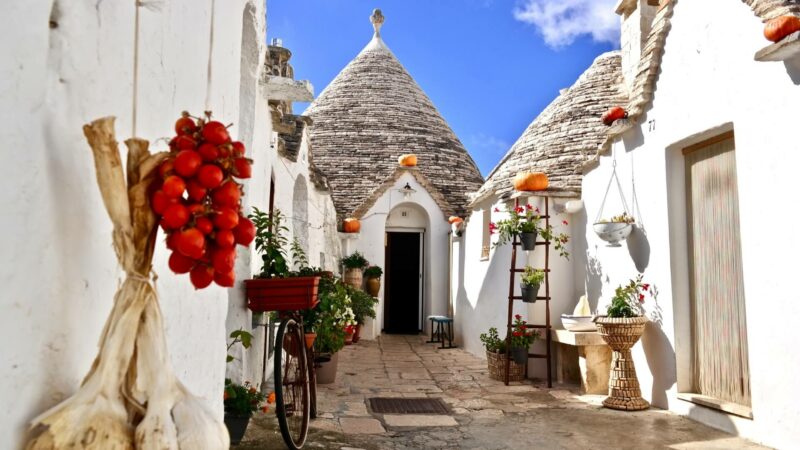Emilia Romagna, keyword: hospitality
Welcome to Emilia Romagna where hospitality is an art, and being pampered (by good food, culture, nature) is essential to understand the identity of the region. For example, here is the city with the world record for porticoes, which allow you to appreciate its beauty in the open air. We are talking about Bologna, with its 62 km of porticoes (some of which are on the UNESCO list), which are a meeting point for its citizens. Bologna is also the city of epithets: “the learned” for the presence of the university, “the towered” for the hundreds of towers that stood tall as a symbol of prestige and defensive fortresses. And while in its belly winds an underground labyrinth of canals and tunnels, reflecting the plots of its centuries-old palaces, to pamper your own belly there is a dense network of typical trattorias (another epithet of Bologna is “the fat”) and venues where the young enjoy staying out late. And if, like us, you believe that food is one of the most captivating pieces of the puzzle of a territory’s history, welcome to Parma – the elegant world capital of wine and food tourism and the Emilian Food Valley – where excellent delicacies such as Parma ham and Parmigiano Reggiano, to name a few, blend so well with the culture that you will discover why the words for “knowledge” ( in Italian is sapere) and “flavor” (in Italian is sapore) have the same root.
The city of Verdi and Toscanini, in addition to its refined artistic heritage, also opens its doors to the hills, where the itinerary winds through the castles and noble residences of the ancient Duchy. From the capital of gastronomy to that of Byzantine-style mosaics: Ravenna is a perfect blend of art and culture, with eight UNESCO sites. And then, preserved like a pearl by a fourteenth/fifteenth-century city wall, is Ferrara. Bathed by the river Po, this small and sly town is pervaded from May to September by a cultural fervor (exhibitions, festivals, concerts, street artist festivals) that takes over the Estense Castle and the Renaissance historic center (UNESCO heritage since 1995), with its cobblestone alleyways and the marvelous Diamond Palace. Lastly, Reggio Emilia, known for both its quality of life and for the Italian tricolor (green, white, red) that was born here in 1797 as the emblem of the Cispadane Republic and later destined to become the flag of independence and Italian national unity.
Emilia Romagna: from the sound of engines to the melodies of music
With DS Journeys, exploring the wonders of Emilia Romagna means treating yourself to a complete experience with homes, museums, and personalities that this beautiful region can boast. Casa Enzo Ferrari in Modena is a tribute to the ingenious founder of the world’s most beloved automotive brand. In Maranello, the sanctuary of the “Prancing Horse,” is where you can immerse yourself in the Ferrari Museum and feel the adrenaline rush of driving simulators. Experience the interaction between human creativity and advanced technology in the Ferrari Citadel. Other stops, for motor enthusiasts include the renowned Misano circuit and the factories of famous brands such as Lamborghini, Ducati, Maserati, and Dallara. From the roar of engines to the beat of drums. The second immersion is in the sea of music that bathes Busseto, Parma, and Modena, where everyone can enjoy a journey into their musical depth. The birthplace of Giuseppe Verdi is in Roncole di Busseto where the notes of memory resonate, Parma houses the Birthplace of Arturo Toscanini and the tomb of a true 19th-century rockstar, Nicolò Paganini near the Ducal Park. In Modena you can visit the warm rooms of the Pavarotti House Museum and learn about the private habits and daily passions of Big Luciano.
In Emilia Romagna, food is a museum-worthy masterpiece
Emilia Romagna knows how to tantalize your senses in every way, especially when it comes to taste. Food here is not just a ritual, a symbol of the territory, or an expression of identity, it is an art worthy of a museum. Setting the stage are iconic gastronomic delights like Parmigiano Reggiano in Reggio Emilia and Traditional Balsamic Vinegar in Modena, both proud symbols of the Emilian region. In the food valley of Parma, you’ll find eight Food Museums, including those dedicated to Prosciutto and cold cuts in Langhirano. In addition, the Wine Museum showcases the renowned red DOC wine of the Hills of Parma, plus the Culatello Museum in Zibello. As an ancient Emilian saying goes, “Pork is like Verdi’s music: there’s nothing to throw away.” This region is also renowned for culinary masterpieces such as mortadella, Ferrara’s salama da sugo, Modena’s cotechino and zampone. The artistry, expertise, and skill of the “sfogline” – the skilled housewives who traditionally ruled the kitchen, tasked with preparing fresh pasta dough and filling it with various ingredients – have given rise to the wealth of regional first courses. You can sample the famous tortellini, tagliatelle to be savored with the classic and renowned Bolognese sauce and the iconic green lasagna.
This richness in culinary traditions explains why, just like in a theater, you may feel compelled to bow down before the menu of this region after a meal. Without waiting for the dishes to exit the stage, you’ll eagerly request an encore.









